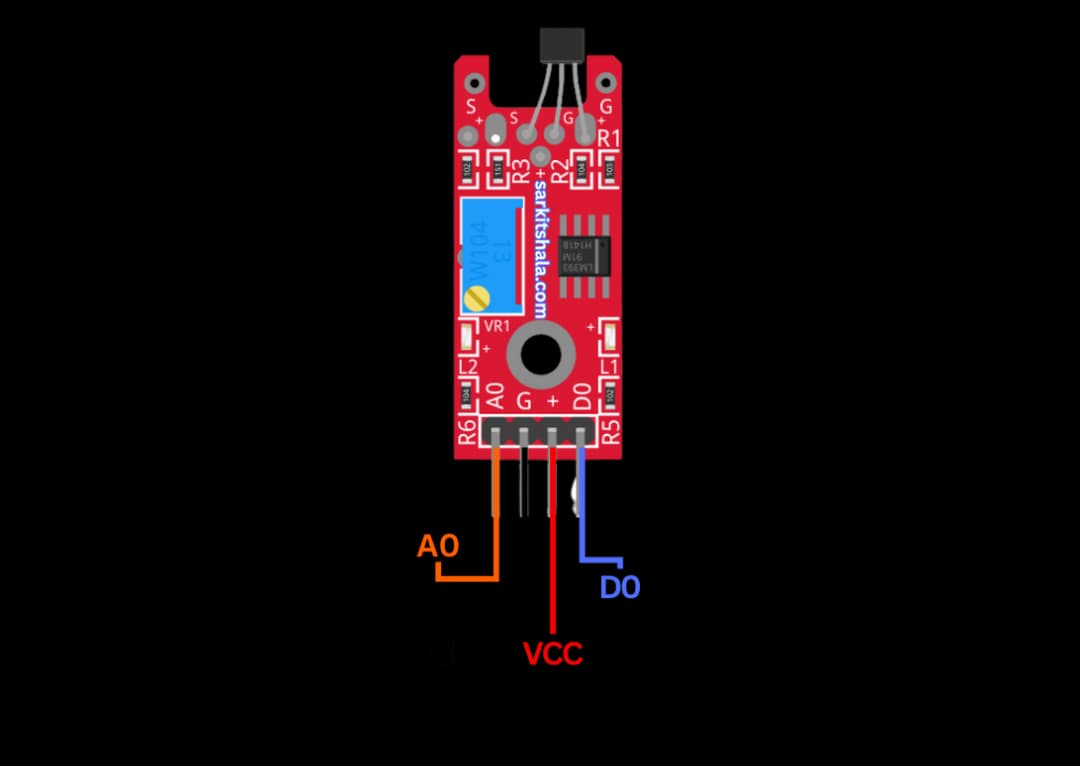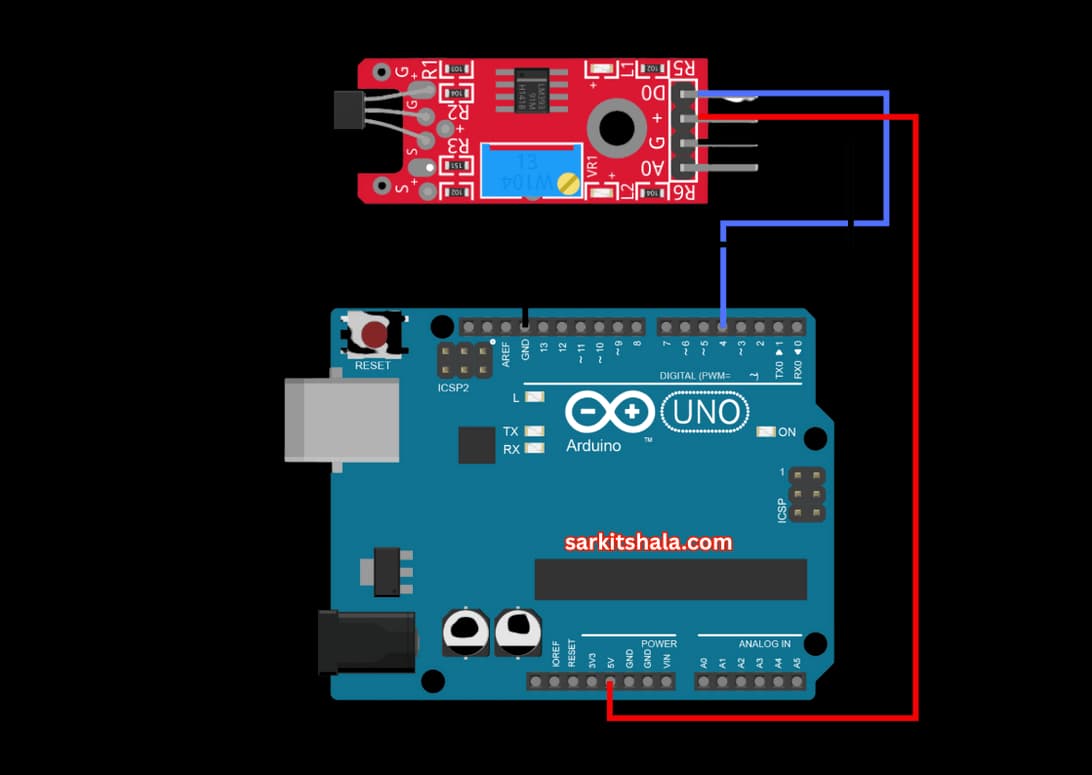Interfacing Linear Magnetic Hall Sensor with Arduino

Linear Magnetic Hall Sensor
A Linear Magnetic Hall Sensor detects changes in magnetic fields along a linear axis. It outputs an analog or digital signal based on the strength of the magnetic field, making it suitable for applications such as position sensing, current measurement, and motion detection. These sensors are commonly used in proximity detection, speed measurement, and as part of feedback systems in motors.
How Hall Sensor Works
A Hall sensor works by generating a voltage when exposed to a magnetic field. The direction and magnitude of the magnetic field determine the sensor's output voltage. In a linear magnetic Hall sensor, this output varies proportionally with the strength and direction of the magnetic field along its sensing axis.
Wiring the Linear Magnetic Hall Sensor to Arduino
To wire the Hall sensor to Arduino, connect the VCC pin to +5V and the GND pin to ground. The output pin should be connected to an analog or digital pin depending on the sensor type. For an analog sensor, use an analog input pin (e.g., A0); for a digital sensor, use a digital input pin (e.g., D2).
Types of Hall Sensors
Analog Hall Sensor
- The voltage increases or decreases as the strength of the magnetic field changes.
- This sensor provides real-time measurements of the magnetic field.
Digital Hall Sensor
- If the magnetic field strength exceeds a predefined threshold, the sensor outputs a HIGH signal.
- If the magnetic field strength is below the threshold, the sensor outputs a LOW signal.
Pin Configuration of Linear Magnetic Hall Sensor
Analog Hall Sensor Configuration
- VCC: Connect to +5V on Arduino.
- GND: Connect to GND on Arduino.
- Output Pin: Connect to an analog input pin on Arduino (e.g., A0) to read the analog signal.
Digital Hall Sensor Configuration
- VCC: Connect to +5V on Arduino.
- GND: Connect to GND on Arduino.
- Output Pin: Connect to a digital input pin on Arduino (e.g., D2) to read the digital signal.


Algorithm
Initialize Components
- Connect the VCC pin of the Hall sensor to +5V and the GND pin to ground.
- Connect the output pin of the sensor to an analog or digital input pin on Arduino (e.g., A0 or D2).
Write the Code
- In the setup() function, initialize the serial monitor to display the sensor readings.
- If using an analog sensor, use analogRead() to get the sensor's output voltage.
- If using a digital sensor, use digitalRead() to detect HIGH or LOW signals.
Detect Magnetic Field
- For an analog Hall sensor, read the sensor's output voltage and calculate the strength of the magnetic field.
- For a digital Hall sensor, detect when the sensor output switches between HIGH and LOW states based on the presence of the magnetic field.
Control System or Display Data
- Use the sensor's output to control a motor, display a value on an LCD, or trigger actions based on magnetic field detection.
Repeat or Modify as Needed
- Loop the program to continuously monitor the sensor and update the system based on field strength or status changes.
Arduino Code
1// Arduino Linear Magnetic Hall Sensor Interface
2// This code reads analog values from a linear Hall sensor and prints magnetic field strength
3
4const int hallPin = A0; // Connect OUT pin of Hall sensor to analog pin A0
5
6void setup() {
7 Serial.begin(9600); // Initialize serial communication
8 Serial.println(\"Linear Magnetic Hall Sensor Initialized\");
9}
10
11void loop() {
12 int sensorValue = analogRead(hallPin); // Read analog value from Hall sensor
13
14 float voltage = sensorValue * (5.0 / 1023.0); // Convert to voltage (assuming 5V ref)
15 Serial.print(\"Sensor Value: \");
16 Serial.print(sensorValue);
17 Serial.print(\" | Voltage: \");
18 Serial.print(voltage);
19 Serial.println(\" V\");
20
21 delay(300); // Delay for readability
22}Applications
- Position sensing (e.g., motor shaft position)
- Speed measurement in rotating systems
- Proximity detection for object or gear alignment
- Current sensing by detecting magnetic fields around conductors
- Measurement of magnetic field strength for research purposes
- Feedback systems in robotics and automation
Conclusion
Interfacing a Linear Magnetic Hall sensor with Arduino enables precise measurement and control based on magnetic field changes. This sensor is valuable for position sensing, speed measurement, and various automation tasks. With a simple interface and adaptable outputs, it can be integrated into a variety of systems for both analog and digital applications.